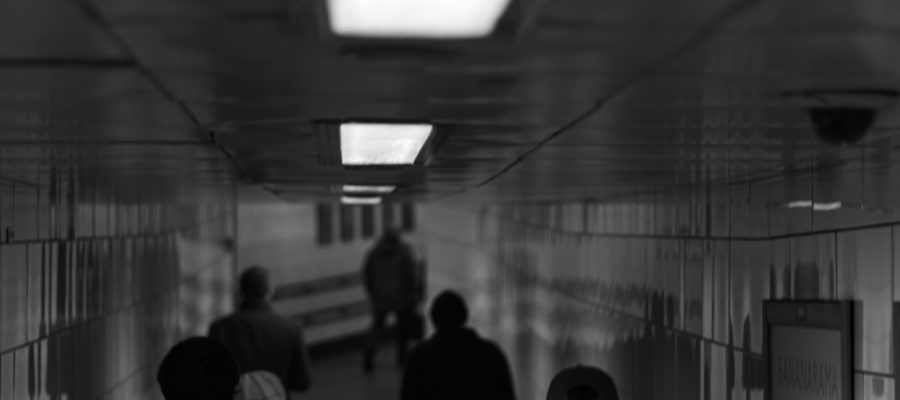Mountford Chambers delivers a nationwide and international service to clients, who are assured quality advice, advocacy and representation at all levels.
Mountford Chambers delivers a nationwide and international service to clients, who are assured quality advice, advocacy and representation at all levels.
News & Insights

During the coronavirus pandemic, the justice system is facing reform. Joanne Kane examines the development of the jury and its role in the justice system, including the rule of 12, unanimous verdicts and judge only trials.
In recent weeks, the criminal justice system has been subject to sweeping reforms to combat the risk of coronavirus in court. The tide is now turning as the judiciary considers how to administer justice in cases awaiting a jury trial in the Crown Court.
Jury origins
In its current form, Criminal Procedure Rule 25.6(6) states that a trial jury “must comprise no fewer than 12 jurors,” but the origin of the “rule of 12” is based on common law and has no statutory foundation.
At first, a “juror” was a man who took an oath to the King. A group of these men came together to form a jury to carry out fact-finding assessments. This function was, at first, distinct from any legal purpose as other mechanisms were used to determine the outcome of a trial, including trial by battle and trial by ordeal.
During this period, in a legal dispute, a party who received twelve oaths in their favour “won” their argument. This is the genesis of both the jury as a legal instrument, and the basis for the rule of twelve people sitting on a jury. In 1956, Lord Patrick Devlin stated, [1]
Many romantic explanations have been offered of the number twelve – the twelve tribes of Israel, the twelve patriarchs, and the twelve officers of Solomon recorded in the Book of Kings, and the twelve Apostles… It is clear that what was wanted was a number that was large enough to create a formidable body of opinion in favour of the side that won.
After Pope Innocent III ruled that the clergy could no longer preside over trials by ordeal in 1215, a new adjudicating body was needed. Trial by ordeal was replaced by fact-finding inquiries involving local people. The jury was the most obvious solution to fill this void, so, over time, the jury evolved from an investigatory party acting on its own knowledge to an adjudicating panel deciding the outcome of cases which were presented to them.
There is no reference to any rule of 12 in the Magna Carta of 1215, despite popular opinion to the contrary. However, Clause 39 guarantees the right of “lawful judgment” to all men:
No free man is to be arrested, or imprisoned, or disseised, or outlawed, or exiled, or in any other way ruined, nor will we go against him or send against him, except by the lawful judgment of his peers or by the law of the land.
Despite no requirement of 12 in Magna Carta, by 1220, 12 jurors had become “conventional” [2] and it is believed that the preferred number of 12 is derived by the Normans, and in turn by Henry II, from Scandinavian tribunals “where the judicial number of twelve was always held in great veneration.” [3]
World War Two: Juries of seven
It cannot be said, however, that there is no precedent for juries proceeding with fewer than twelve jurors. On 3 September 1939, the same day that Neville Chamberlain delivered his Ultimatum Speech, declaring war on Germany, the Administration of Justice (Emergency Provisions) Act 1939 was brought into force. Section 7(1) of the Act stated that “it shall not be necessary for the jury to consist of more than seven persons.” The stated exceptions were cases of treason, murder and any other charge if the judge deemed it fit by virtue of the gravity of the matters in issue. Although majority verdicts were not permitted in England and Wales at this time, Scotland adopted similar legislation but permitted a majority verdict for juries of seven when five jurors were in agreement (Section 3, Administration of Justice (Emergency Provisions) (Scotland) Act 1939).
The 1939 Act is often cited as justification to reduce the number of participants in jury trials and to continue jury trials during the coronavirus pandemic on this basis. Although there are obvious advantages for facilitating social distancing, it will not necessarily expedite the time taken to hear a trial.
An important feature of the 1939 Act is the often over-looked section 7(3), which reduces the jury age limit from sixty five to sixty years. At a time when those over the age of sixty are cited as being more vulnerable to coronavirus, there may be an argument for our current age limit of 75 for jurors to be reduced accordingly.
Unanimity rule
The requirement for a jury’s verdict to be unanimous was a long-standing tradition. Blackstone recorded that “the truth of every accusation . . . should . . . be confirmed by the unanimous suffrage of twelve of his equals and neighbors [sic], indifferently chosen, and superior to all suspicion”. [4]
The issue of jury interference was cited in 1967 as a reason to reform the unanimity rule for juries. This resulted in the Criminal Justice Act 1967, which permitted non-unanimous verdicts for the first time. The provisions governing majority verdicts in Section 17 of the Juries Act 1974 do not provide for any circumstances involving fewer than nine jurors in agreement.
The common law tradition of the United States of America has proud roots in its English legal heritage. The Sixth Amendment of the US Constitution provides that:
In all criminal prosecutions, the accused hall enjoy the right to a speedy and public trial, by an impartial jury of the State and district.
Notably, however, in April 2020, the US Supreme Court published its ruling in the case of Ramos v Louisiana. At the time of the appeal in all but two of the States (and in federal court) a unanimous decision from the jury was required to convict a defendant.
In Ramos, the Supreme Court’s petitioner was convicted on a majority verdict (10-2) and, although this would have resulted in a mistrial in 48 other states, he was sentenced to life imprisonment without parole. The Court concluded that the Sixth Amendment mandates unanimity in all federal and state jury trials. In its judgment, the Court examined the underlying historical rationale for the development of non-unanimous verdicts as a means in Louisiana “to ensure that African American juror service would be meaningless” and in Oregon to dilute “the influence of racial, ethic, and religious minorities on Oregon juries.” In delivering the Opinion of the Court, Justice Gorsuch cited the requirement of juror unanimity from 14th century England and the Court held that the right to a jury trial demands a unanimous verdict to convict a defendant.
While the approach in upholding the requirement of unanimity holds steadfast to centuries old principles of justice, it must also be acknowledged that, in some states, it is permissible for a defendant to be tried by a jury of only six people, on the basis that the requirement of twelve jurors was “a historical accident, unrelated to the great purposes which gave rise to the jury in the first place” (Williams v. Florida, 399 U.S. 78 (1970)), but at least six jurors are required to ensure that a jury composition is compatible with US Constitutional rights (Ballew v. Georgia, 435 U.S. 223 (1978)).
Despite the fact that both the US legal system and the legal system of England and Wales have grown from the same roots, the US has maintained its loyalty to unanimous juries while the legal jurisdiction of England and Wales has departed from it. Only time will tell as to whether we follow the model of some US states in abandoning twelve person juries, at least for a short time.
Diplock courts
In April, the Lord Chancellor, Robert Buckland KC, gave evidence to the Joint Committee on Human Rights. He is reported to have said that judge-only trials would be a “disproportionate step” to consider in response to coronavirus. However, a number of high-profile sources have recently advocated the utility of judge-only trials on a short term basis and therefore this issue needs to be addressed in any consideration of the future of our justice system.
Blackstone praised the jury system as being distinct from “the violence and partiality of the judges appointed by the Crown.” He wrote:
Our law has therefore wisely placed this strong and twofold barrier, of a presentment and a trial by jury, between the liberties of the people and the prerogative of the Crown. [5]
Juries are an essential function of our justice system if we are to live up to Lord Hewart CJ’s maxim, “not only must justice be done, it must be seen to be done.” Defendants and the public expect serious criminal cases to be placed in the hands of a jury, and fulfilling that expectation is necessary to uphold faith in the justice system.
In limited circumstances, judge only trials can proceed under current legislation. Section 44 of the Criminal Justice Act 2003, provides a mechanism for the prosecution to apply for a trial without a jury in circumstances involving the risk of jury tampering. The standards by which that requisite risk is examined are high, including the need for (i) evidence of a real and present danger that jury tampering would take place and (ii) notwithstanding any steps to prevent tampering, the likelihood of it taking place would be so substantial as to make it necessary in the interests of justice for the trial to be conducted without a jury. An application under section 44 should be heard by the presiding judge of the circuit and following a successful application, the presiding judge should identify a senior and experienced judge to conduct the trial.
In recent history, judge only trials were a wider reality in Northern Ireland. In 1973, during the Troubles and following the report of the Diplock Commission, juryless “Diplock courts” were introduced to govern the trials of those suspected of terrorist activities in response to concerns about juror intimidation from paramilitary organisations and the prospect of biased verdicts from jurors. It is worth noting that the Commission considered the option of using tribunals of judges for trials, but felt that a judge-alone trial was a superior option.
Amnesty International’s findings arising from Diplock courts referred to concerns about altering the role of a judge in serious criminal cases in Diplock courts to “both the umpire over the proceedings and tribunal of fact” which results in,
…reduced safeguards against subjective factors influencing the findings of fact. Such subjective factors need not take the form of bias on the part of the judge, but may include ‘case-hardening’, the negative effect of constant involvement in the administration of justice on the detachment and objectivity of judges. [6]
Reasons & appeals: Cheaper by the dozen?
Juries do not provide reasons for their verdicts. Lord Devlin described the jury as “the oracle deprived of the right of being ambiguous” [7] as only its verdict, guilty or otherwise, is not open to any scrutiny. This ambiguity is not incompatible with the Article 6 right to a fair trial (Taxquet v Belgium). However, in the event that a single judge decides upon the outcome of a trial, this decision would need to be accompanied by reasons.
Section 48 of the Criminal Justice Act 2003 states that following conviction in a judge-only trial, a judgment providing the reasons for a conviction is required. Further, in returning to the consequences of Diplock courts, emergency legislation permitted convicted defendants to have the right to appeal against both conviction and sentence without the requirement to obtain permission to appeal [8]. However, while a greater proportion of Diplock defendants appealed against their conviction, their success rate on appeal was half that of those convicted by juries.[9]
In all discussions of the criminal justice system, expense is always a primary factor. Trial by judge alone may be faster. It is a well-known axiom that justice delayed is justice denied, and there were widescale delays in the criminal justice system even before the coronavirus pandemic began. At the end of 2019, the Ministry of Justice released its criminal court statistics which revealed that there were 37,434 cases awaiting trial in the Crown Court (an increase of 13% from the end of 2018). Nonetheless, the verdict of a jury, rightly or wrongly, is more likely to draw a line under a criminal case. Appeals may spring from wrong turns taken in the trial process, but not from the decision itself following a jury trial. It may be the case that justice is also cheaper by the dozen.
Conclusion
It is noteworthy that after more than 700 years of juries, it was not until the 20th and 21st centuries that the solidity of the jury as a 12-person body solely in charge of verdicts in serious criminal cases began to be eroded in England and Wales, in terms of the number of people required to sit on a jury, the presence of a jury in all serious cases and majority verdicts.
From a defendant’s perspective, there is value in being judged by a group of his or her peers. It provides a separation between the role of the judge and the ultimate decision of guilt or innocence. Further, the jury acts as an important check and balance in our system and it is a fetter on an overzealous legislative body to know that a jury may not necessarily enforce its will. Therefore there is something to fear from non-jury trials: it is not the presence of judges, but the absence of the blameless jury.
It is not “sentimentality” to believe that trial by jury is a defendant’s right. Its precise origins may not be easily found, but it is founded on historical precedent. The pandemic has recently been described as a portal which will take us from an old order to a new one. In terms of our criminal justice system, we must wonder where the portal will lead. We need to ensure that any provisions put in place are consistent with the rule of law and uphold the principles of justice.
We need a solution to the current stalemate, when safe to progress, for the sake of our society. It is clear that judge-only trials are not the answer, as they deny a defendant the “judgment of his peers” envisioned in 1215 and exacerbate the perceived gap between the judiciary and the public it serves. Reducing the number of jurors on a panel is problematic, but Article 6 does not prohibit it and the Sixth Amendment has not prevented US courts from following this path. However, there is a lack of recent empirical data to properly examine the interplay between jury size and verdict. Justice through a screen is just that: a screen from justice, and digital solutions are not fit for purpose at present. We need large spaces which will permit social distancing for court proceedings and a creative approach to find appropriate venues. Lord Devlin called the jury “the lamp that shows that freedom lives.” [10] Nothing should permit that light to be dimmed, at the risk of plunging our justice system into darkness.
***
(1) Patrick Devlin. The Hamlyn Lectures, Eighth Series: Trial By Jury. London: Stevens & Sons Limited, 1956 (p. 8)
(2) Sadakat Kadri. The Trial: A History from Socrates to O.J. Simpson. 2nd ed. London: Harper Perennial, 2006 (p. 72)
(3) William Forsyth. History of Trial by Jury. London: JW Parker, 1852 (p. 4)
(4) William Blackstone. Commentaries on the Laws of England, Volume 2 – Book III and IV. Reprinting New York, WE Dron Printer, 1832 (p. 280)
(5) William Blackstone. Commentaries on the Laws of England, Volume 2 – Book III and IV. (p.280)
(6) Douwe Korff. The Diplock Courts in Northern Ireland: A Fair Trial? Utrecht: Netherlands Institute, 1982 (Appendix I: Summary of Amnesty International’s Findings (p. 106))
(7) Patrick Devlin. The Hamlyn Lectures, Eighth Series: Trial By Jury. (p. 14)
(8) Brice Dickson. The European Convention on Human Rights and the Conflict in Northern Ireland. Oxford: OUP (Kindle edition) (p. 206)
(9) Ibid. (p. 208)
(10) Patrick Devlin. The Hamlyn Lectures, Eighth Series: Trial By Jury. (p. 164)

Tom Edwards looks at the impact of the shift from Joint Enterprise to Common Purpose in the five years since…

Ben Hargreaves explores the inherent challenges in the admissibility of sexual history in sex cases. Section 41 of the Youth…

An analysis of the law on fitness to plead and stand trial in the magistrates’ courts: Silas Lee reviews the…

Silas Lee, pupil barrister, reviews the statutory regime on witness anonymity. Anonymous witness orders are most commonly sought by the…